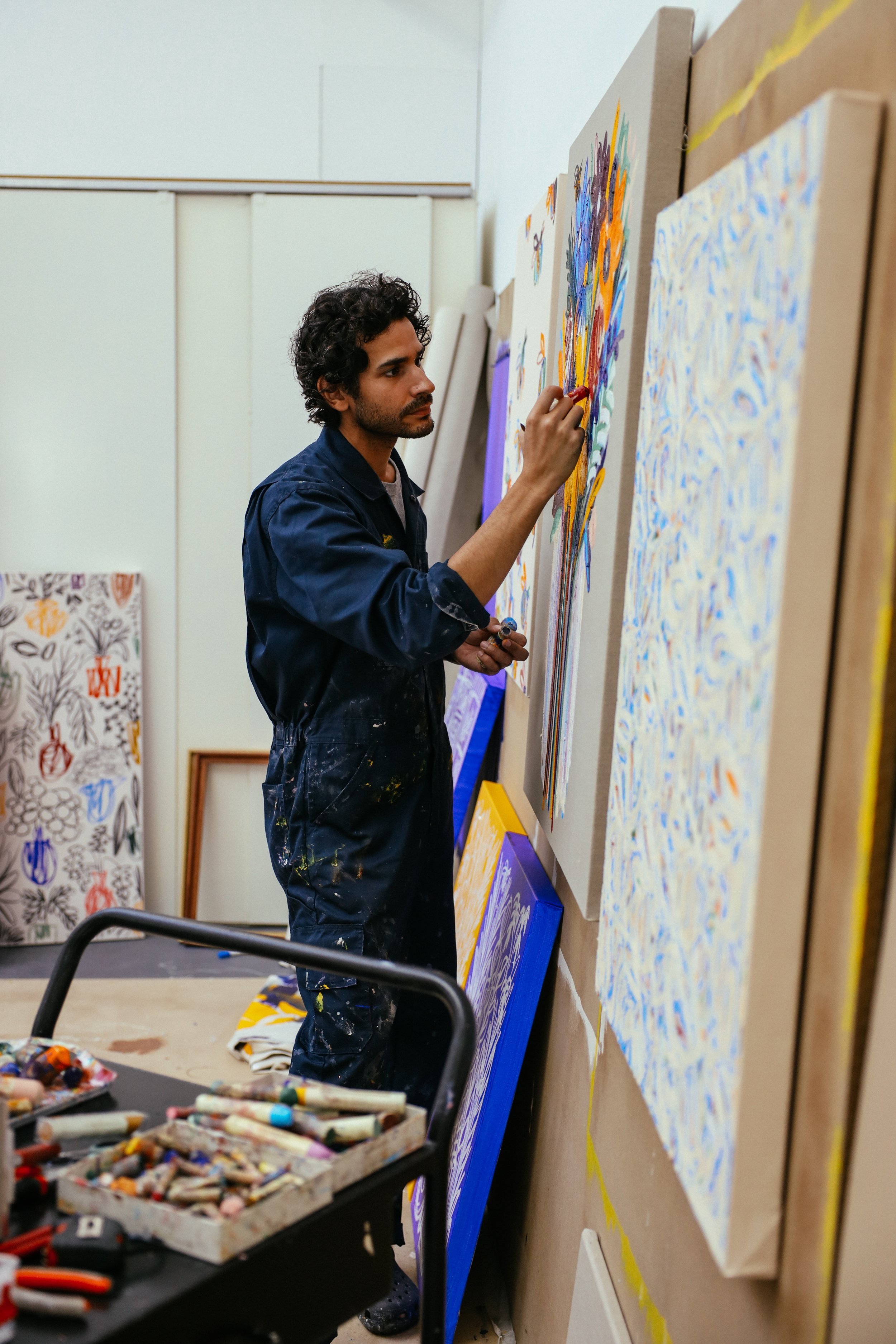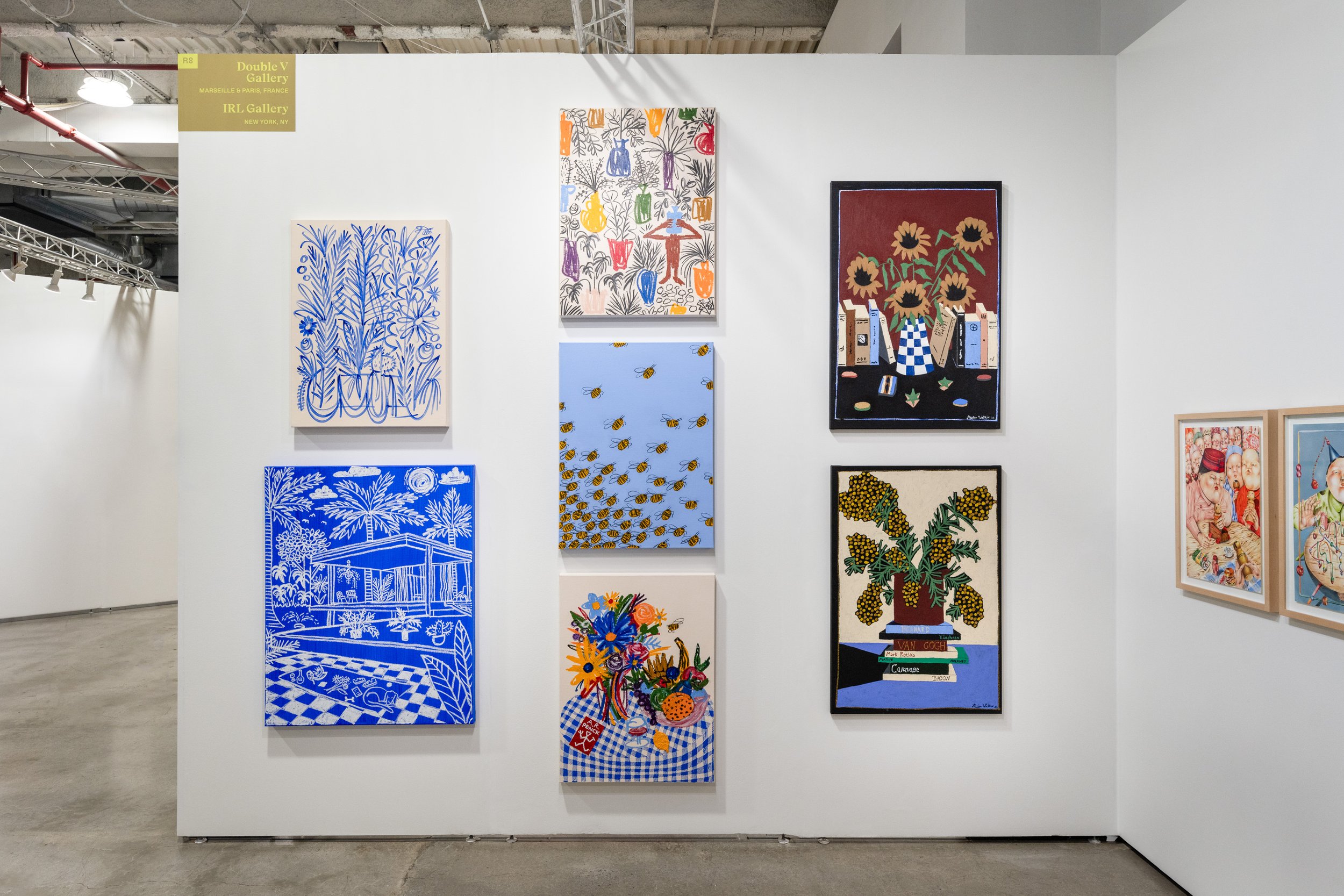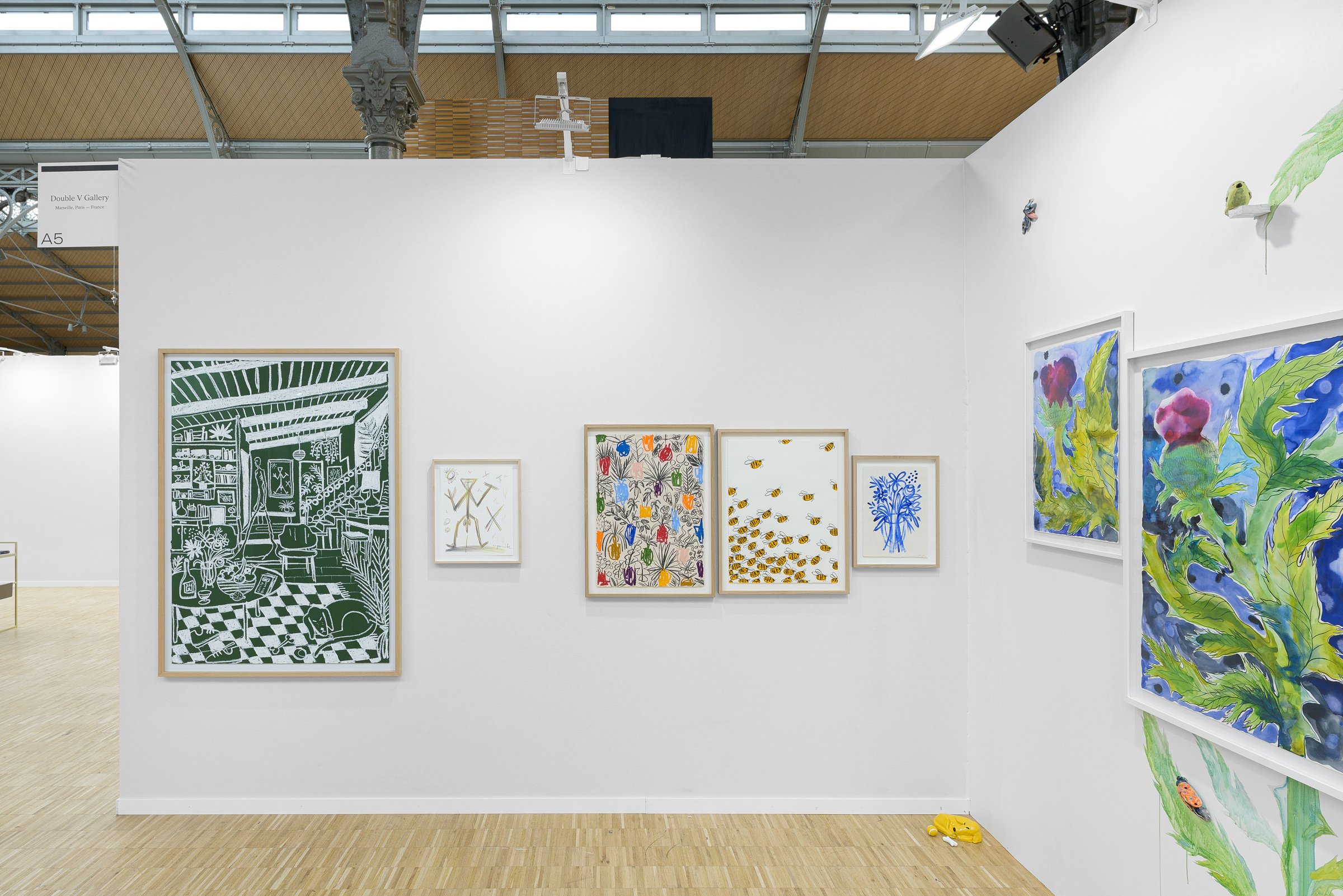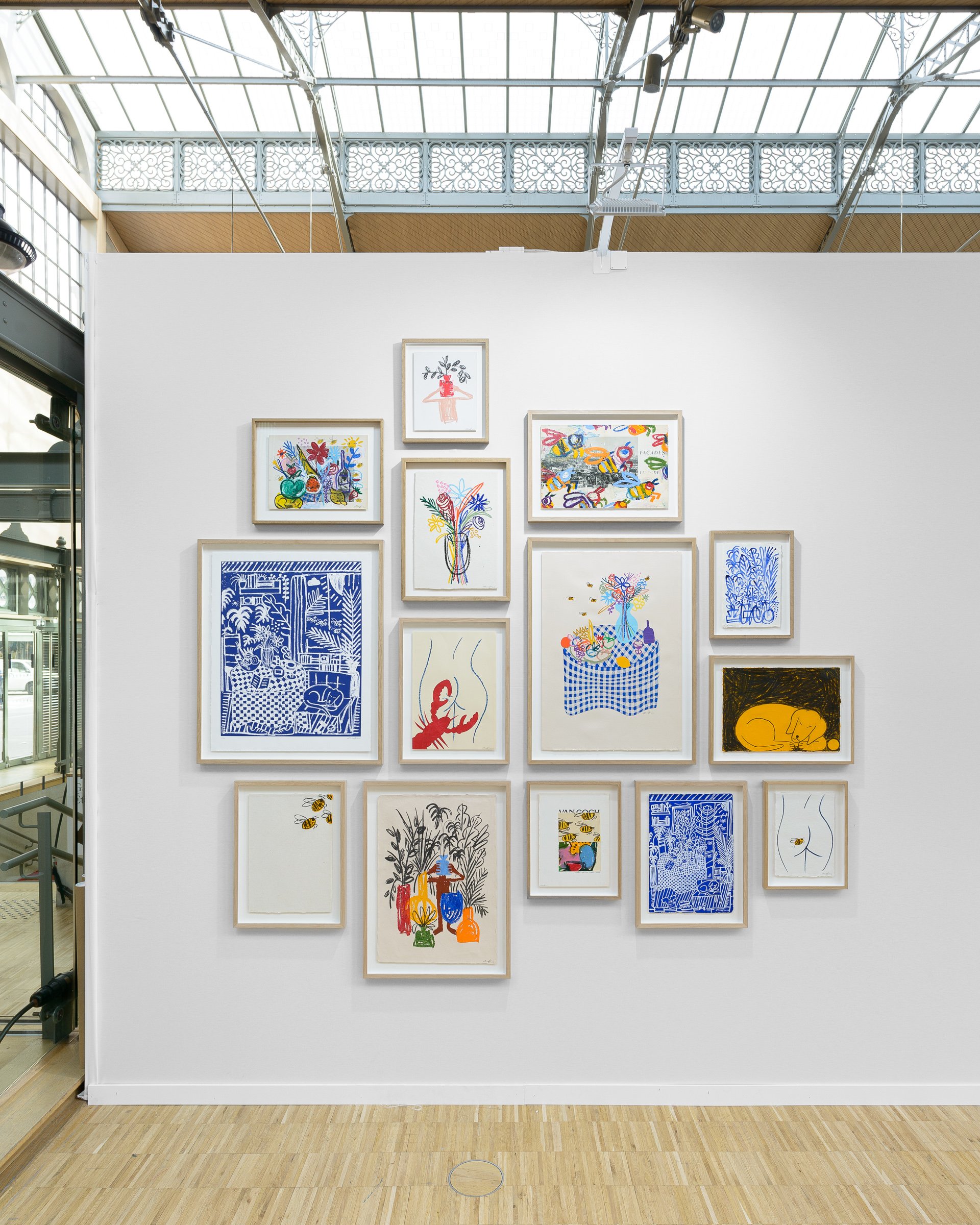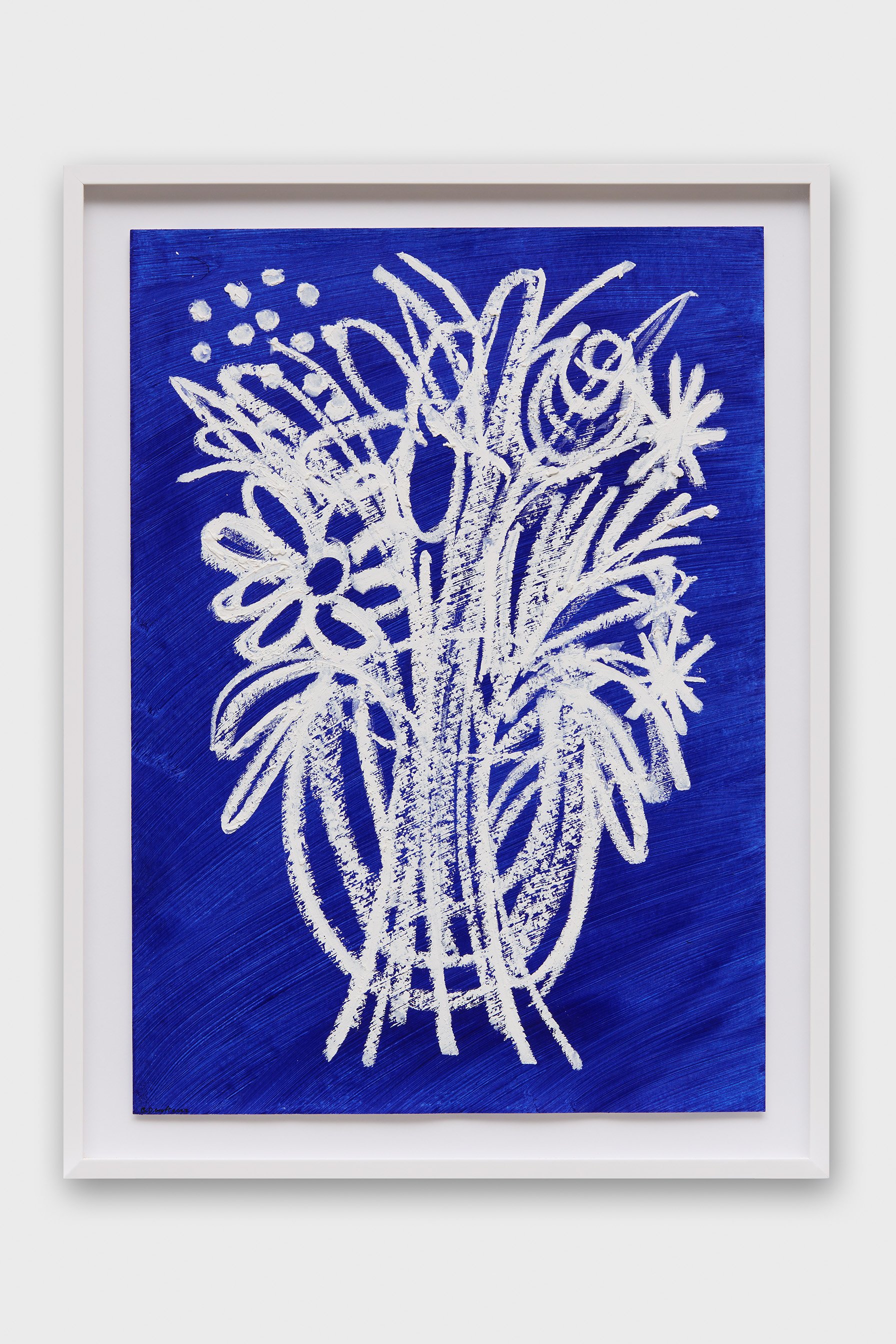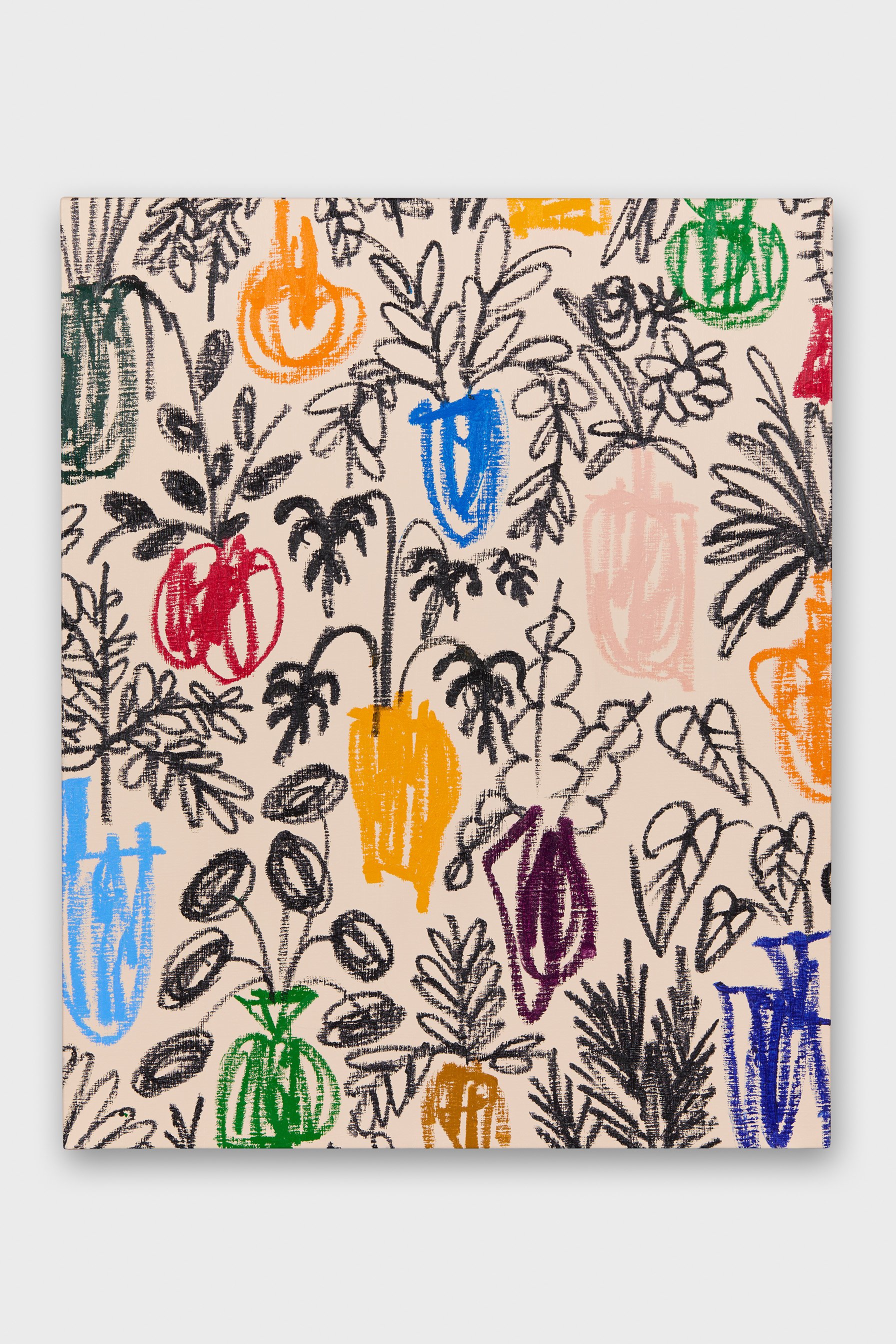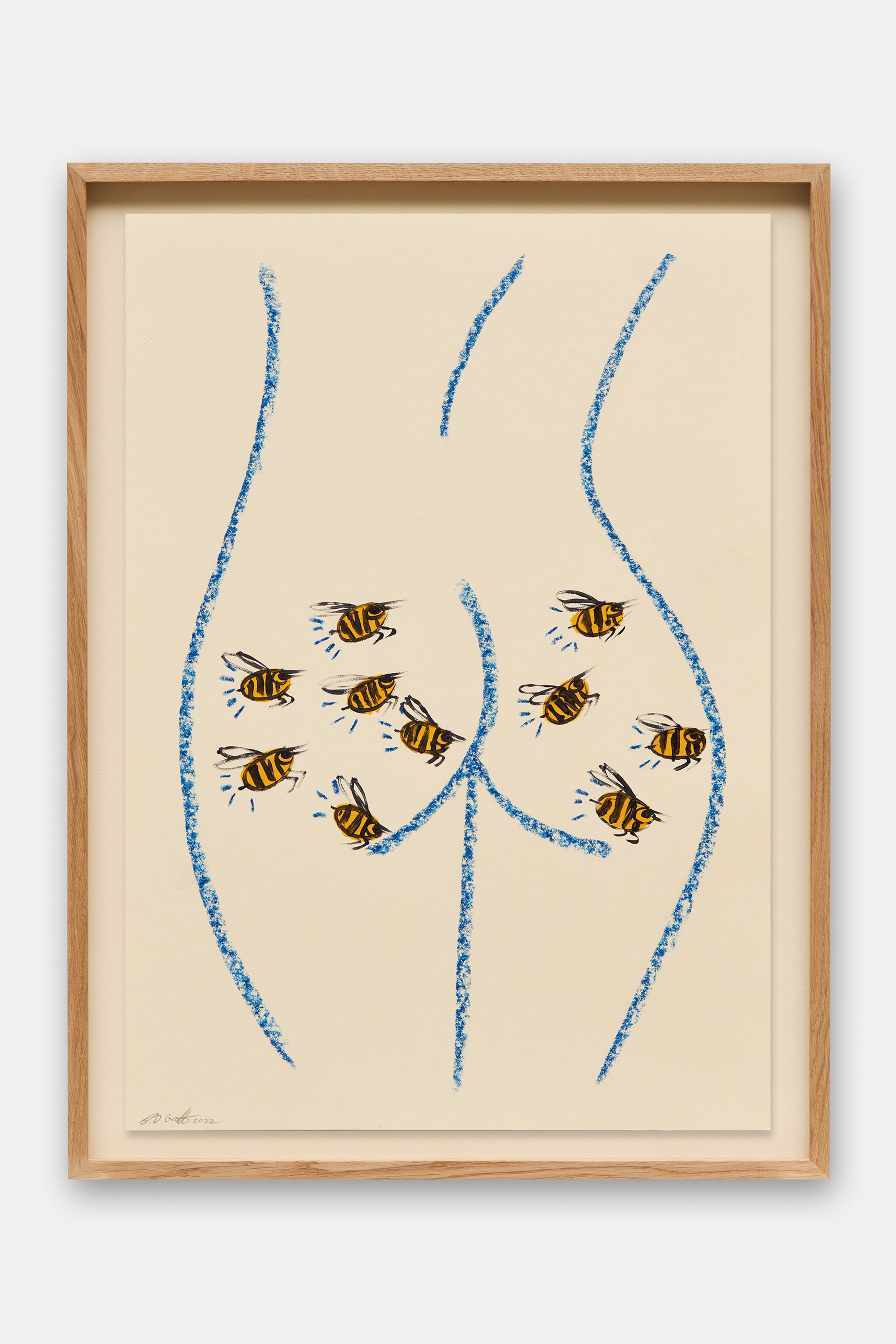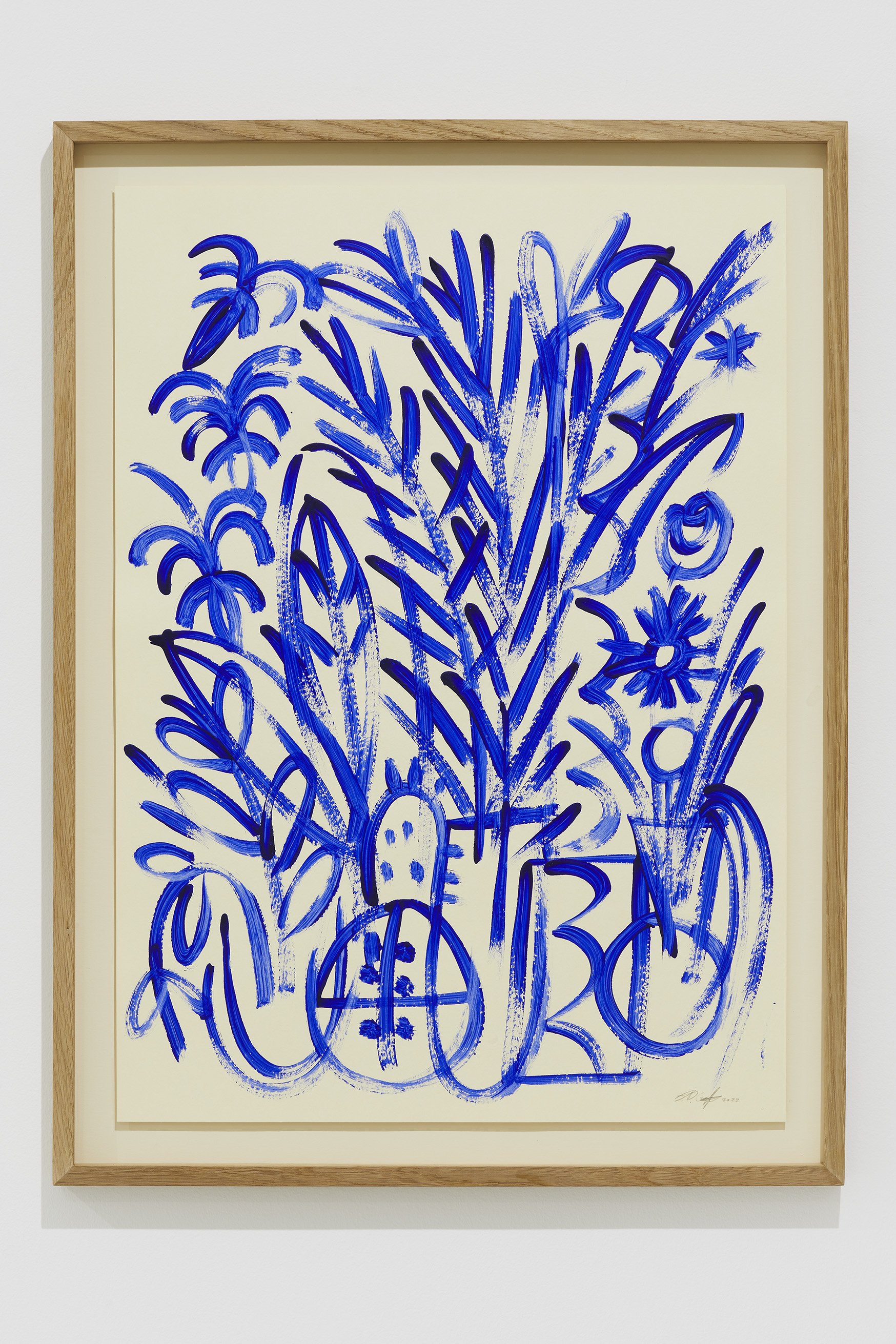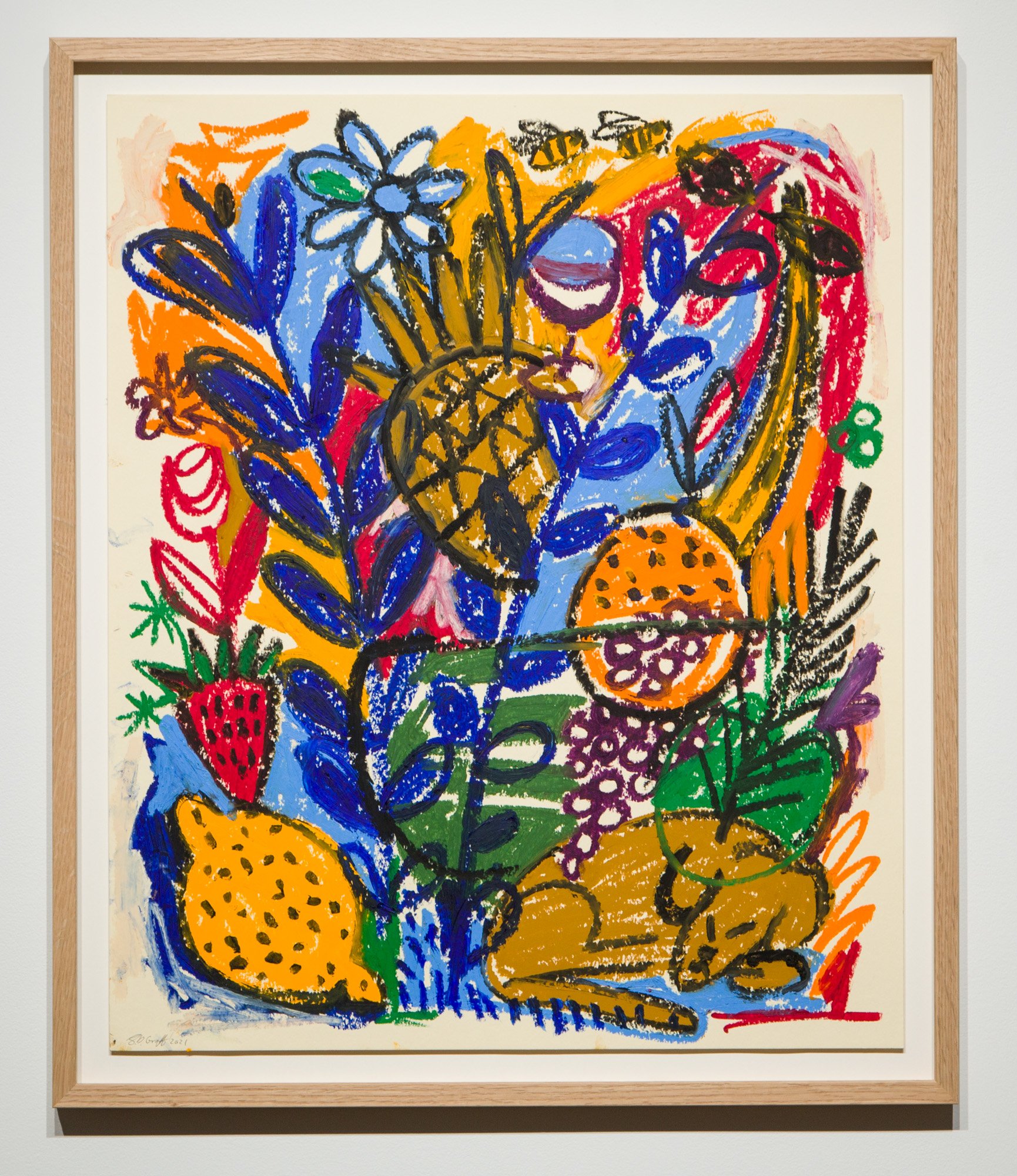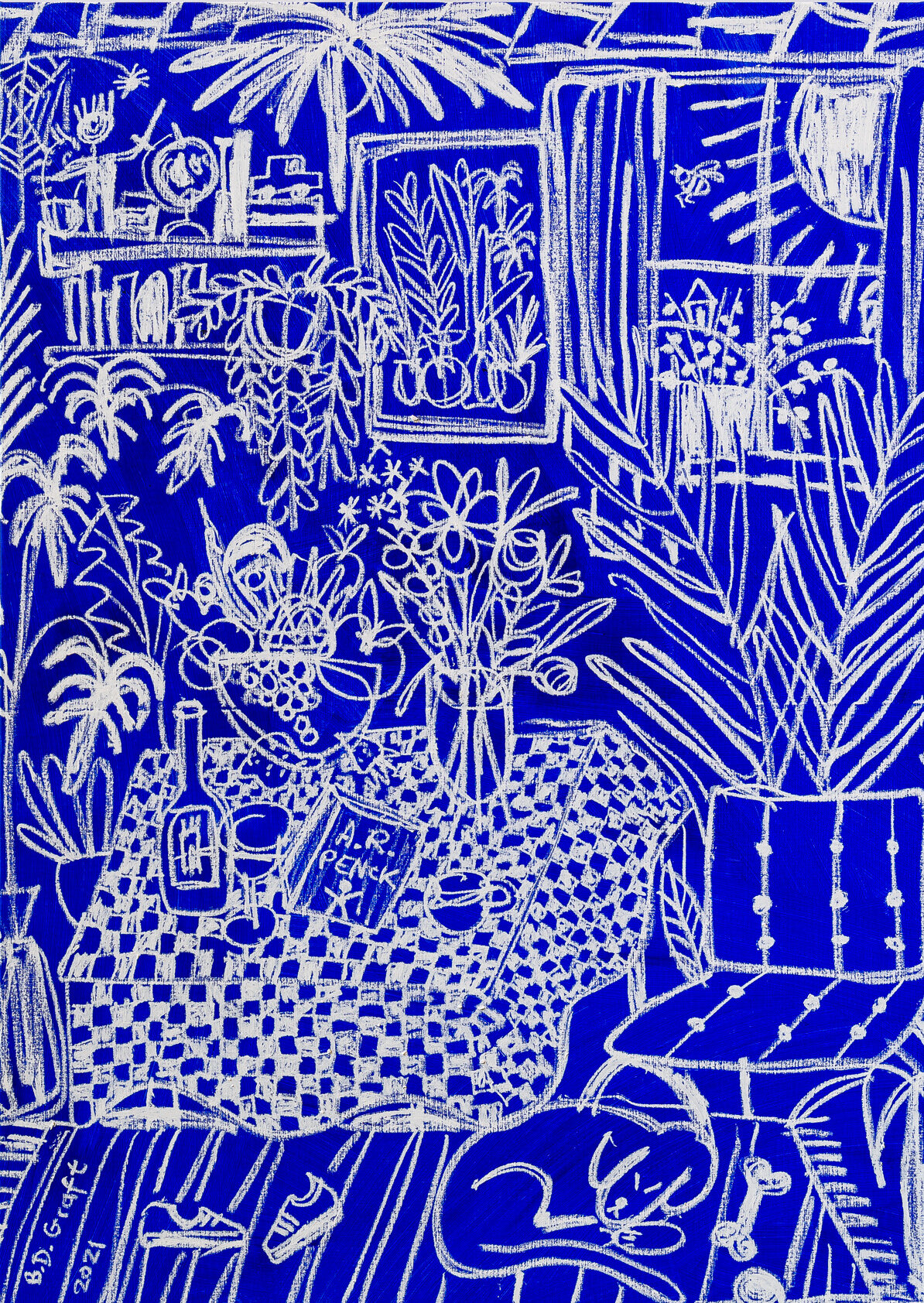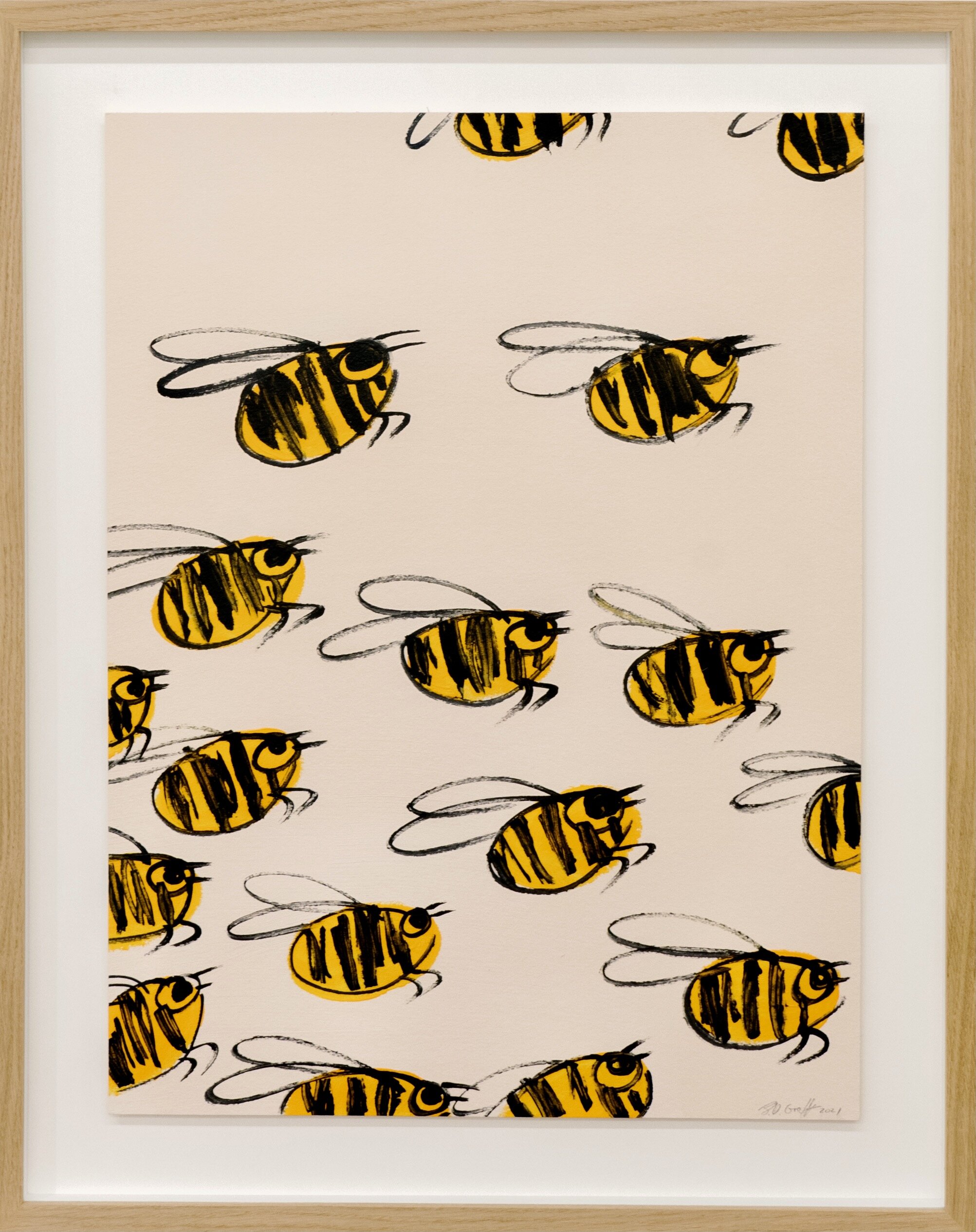B.d. graft
[ FR ]
Né à Cologne (ALL) en 1988, B.D. Graft vit et travaille à Amsterdam (NL).
Après avoir obtenu une maîtrise en cinéma et littérature anglaise à l’université d’Amsterdam, B.D. Graft capte l’attention des amateurs d’art avec ses compositions épurées et ses talents de dessinateur ludique, faisant appel à la spontanéité et à la joie que nous éprouvions en griffonnant quand nous étions enfants.
En combinant des expositions en galeries à Amsterdam, Séoul, Anvers ou Düsseldorf avec un public d’admirateurs croissant sur les réseaux sociaux, et des dessins commandés par Virgil Abloh (Off White), Graft fait partie d’une nouvelle génération d’artistes qui naviguent avec succès dans les interstices d’instagram et des beaux-arts.
Après lui avoir dédié sa première exposition personnelle à Paris en 2021, Double V Gallery a présenté l’artiste à New York en 2022, avant un nouveau focus important au salon Art021 Shanghai puis à Untitled Miami en novembre prochain.
Voyage au point de satisfaction
L’intérêt personnel pour les œuvres qui ont un attrait immédiat, qui incitent à s’approcher et à s’y engager d’une manière ou d’une autre, a incité Brian de Graft, alias B.D. Graft, à développer sa pratique autour d'une imagerie simple, facilement identifiable et universellement reconnaissable. La préoccupation initiale pour le monde naturel et l’environnement, développée initialement à partir d’une ambition d’exprimer des émotions et des réflexions, s’est transformée en une célébration de la vie sous toutes ses formes.
Simultanément, l’expérience récente de devenir père a présenté l’idée de construire une maison familiale et de regarder le monde depuis une telle perspective. Afin d’explorer ces sujets personnellement significatifs, l’artiste, né en Allemagne, élevé au Royaume-Uni et basé à Amsterdam, a défini un espace sûr et confortable, rempli d’images, de personnages et d’éléments récurrents qui se sentent proches tout en portant une valeur symbolique sous-jacente.
Inspiré par l’aspiration stoïque à contrôler les choses qui sont en notre pouvoir et à être indifférent à celles qui ne le sont pas, B.D. Graft se met délibérément au défi de lâcher ce contrôle. Pour ce faire, il lutte contre la tentation de continuer d'une manière qui soit reconnue ou appréciée et choisit que l’œuvre reste ludique, accessible, dépourvue de toute intention d’impressionner, mais toujours stimulante pour elle-même. Cela conduit à une représentation plus souple de l’imagerie souhaitée, à une utilisation plus ciblée de la matérialité de la peinture, ainsi qu’à un intérêt pour la capture de l’essence de la scène représentée au-delà de ses qualités physiques. Transformant le cadre de représentation en passages bruts, parfois abstraits, il indique la position transitionnelle de l’artiste et son affinité pour les abstractions fortement texturées de Martha Jungwirth, Tracey Emin, Rita Ackermann, Tal R, ou les artistes de CoBrA
L’évolution, la modification et la réinvention constantes de sa pratique sont marquées par des moments qui ont fait basculer la direction des choses vers l’avant. Le travail avec des fleurs, des pots de plantes, des coupes de fruits et des natures mortes, ainsi que l’utilisation fréquente du jaune, ont conduit à l’introduction de l’imagerie désormais caractéristique des abeilles, comme symbole de la communauté, de la fragilité du monde naturel, de la procréation et du dévouement. Plus tard, la période de confinement et d’isolement a proposé d’entasser certains de ces éléments dans les intérieurs douillets imaginaires, saisissant ainsi le sentiment d’enfermement du monde. Comme si l’on rangeait une pièce réelle, cela a permis à B.D. Graft de jouer avec les formes et leurs relations, ainsi que d’expérimenter différentes façons de les représenter.
Simultanément, les sculptures de figures humaines avec des pots de plantes à la place de la tête étaient devenues une extension de l’envie de pousser le processus dans un nouveau domaine tout en (auto)dépeignant une personne extravertie/introvertie qui veut être remarquée mais qui préfère en quelque sorte être invisible.
Peu intéressé par l’originalité ou l’innovation dans le domaine technique, B.D. Graft transforme l’espace intermédiaire entre la laideur et la beauté, un espace dans lequel le « mauvais art figuratif » s’efforce de s’épanouir, en terrain de jeu où il ajoute « le bord » à son travail. C’est ainsi que des thèmes plutôt clichés, comme les natures mortes, les coupes de fruits ou les pots de plantes, deviennent des modèles autorisés et familiers auxquels il ajoute son propre ton et sa propre ambiance. Profondément attaché à l’état précieux de la floraison, chaque surface vierge est abordée comme une ardoise propre, un nouveau départ, canalisant l’énergie printanière bourdonnante de la perpétuation de la nature. En fin de compte, chaque étape de ce développement auto-pensé s’avère fondamentale pour que B.D. Graft arrive au point où il apprécie sa pratique et considère son œuvre comme les étapes d’un voyage vers le point de satisfaction.
Saša Bogojev
[ ENG ]
Born in Cologne (GER) in 1988, B.D. Graft lives and works in Amsterdam (NL).
After completing a Master’s degree in Cinema and English Literature at the University of Amsterdam, B.D. Graft captures the attention of art lovers with his uncluttered compositions and playful drawing skills, tapping into the spontaneity and joy we experienced when doodling as children.
Combining successful gallery shows in Amsterdam, Seoul, Antwerp or Düsseldorf with a growing fan base on social media, and commissioned drawings by Virgil Abloh (Off White), Graft has been part of a new generation of artists that successfully navigate the interstices between instagram and fine art. After dedicating him his first solo exhibition in Paris in 2021, Double V Gallery presented the artist in New York in 2022, before an important new focus at Art021 Shanghai and Untitled Miami this November.
Journey to the Point of Satisfaction
Personal interest in the work that has instant appeal, that urges one to walk up and engage with it in some manner, prompted Brian de Graft aka B.D. Graft to develop his practice around simple, easily recognizable, and universally relatable imagery. Initially developing from an ambition to express emotions and reflections, the early concern about the natural world and the environment transmuted into a celebration of life in every form. Simultaneously, the recent experience of becoming a father presented the idea of building a family home and looking out at the world from such a perspective. And in order to explore these personally important subjects, the German-born, UK-raised, and Amsterdam-based artist outlined a safe, comfortable space filled with recurring imagery, characters, and elements that feel close while carrying an underlying symbolic value.
Inspired by the Stoic‘s aspiration to control things that are within our power and be indifferent to ones that are not, B.D. Graft is purposely challenging himself to let go of that control. In order to do so, he is fighting the temptation to continue in a way that is recognized or appreciated and chooses for the work to remain playful, approachable, stripped of any intention to impress, but always stimulating for himself. This conducts the looser depiction of desired imagery, more focused utilization of the materiality of paint, as well as interest in capturing the essence of the set scene, beyond its physical qualities. Transforming the representational framework into raw, sometimes abstract passages, it points at the artist's transitional position and affinity for the heavily textured abstractions by the likes of Martha Jungwirth, Tracy Emin, Rita Ackermann, Tal R, or CoBrA artists.
The ongoing evolution, modification, and reinvention of his practice are marked by moments that shifted the direction of things moving forward. Working with flowers, plant pots, fruit bowls, and still lifes, as well as the frequent use of yellow, led to the introduction of now-signature bee imagery, as a symbol of community, the fragility of the natural world, procreation, and dedication. Later on, the period of lockdowns and isolation proposed cramming some of these elements inside the imaginary cozy interiors, capturing the confined feeling of the world. As if tidying an actual room, it enabled B.D. Graft to play with shapes and their relationships, as well as experiment with different ways of depiction. Simultaneously, sculptures of human figures with plant pots for heads had become an extension of the urge to push the process into the new field while (self)portraying an extrovert/introvert person that wants to be noticed but somehow prefers to be invisible.
Uninterested in originality or innovation in the technical sphere, B.D. Graft transforms the in-between space between ugliness and beauty, a space in which "bad figurative art" strives, into the playground where he adds “the edge” to his work. This is how somewhat cliche tropes such as still lifes, fruit bowls, or plant pots, become approved, familiar templates to which he adds his own tone and atmosphere. Deeply fond of the precious state of flourishing, each blank surface is approached as a clean slate, a new beginning, channeling the buzzing spring vibe of nature’s perpetuation. In the end, every step of this self-thought development turns out to be fundamental for B.D. Graft to arrive at the point where he is enjoying his practice and is looking at his oeuvre as the steps on a journey to the point of satisfaction.
Saša Bogojev
Vue du stand Future Fair New York, 2024 - Double V Gallery @ Jitskenap
Vue du stand Art Paris, 2024 - Double V Gallery @ Grégory Copitet
Vue d’exposition Inner Worlds, 2023 - Double V Gallery @ JC Lett
Vue d’exposition Vanille Fraise Pistache, 2023 - Double V Gallery @ Romain Darnaud

